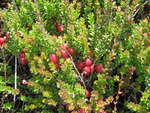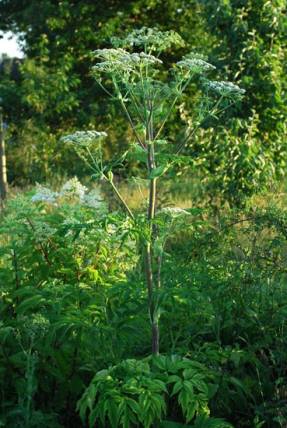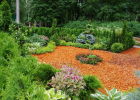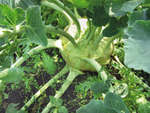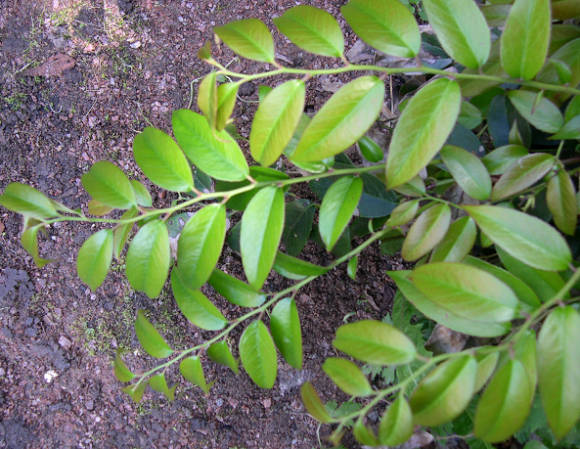
This article will focus on a plant that should never be used as a phytotherapeutic agent. Unfortunately, some publications mention its use as an external remedy for joint diseases. This information is gleaned from medieval European herbalists and wanders from one modern edition to another. But its “toxicity” is so great that no advice from “knowledgeable people” should encourage you, dear readers, to use it. Handling it requires all the more care, since in recent years it has been very widely used as a decorative one in summer cottages. Rather, we will talk about a whole genus of plants that attracted the attention of flower growers not only for their beauty, but also for the fact that they bloom at inopportune times. Actually, the name itself speaks about it. It will be about colchicum, or colchicum.
On the territory of Russia, two species are found in the wild - the magnificent crocus (Colchicumspeciosum) and autumn crocus (ColchicumautumnaleL.). In general, the genus is much more extensive. It currently numbers more than 100 species that grow in Europe, the Mediterranean, up to Central Asia and India. Representatives of this genus are extremely poisonous plants, which Dioscorides paid attention to. According to him, most of the plant species of this genus grows on the Black Sea coast in Colchis. From this fabulous land, the plant inherited its very name. Colchicum, which in the sense means “a native of Colchis.” According to the ancient Greeks, in Colchis there was a garden of the goddess Hecate, where numerous poisonous plants grew - henbane, hemlock, cicuta and, of course, the crocus. with burning eyes. ”And Medea used the crocus for the preparation of all sorts of witchcraft potions.
There are a lot of popular names for this plant, but all somehow remind either of the late flowering time, or of pathological toxicity - a timeless color, timeless, winter, autumn flower, autumn color, death of a dog, a son without a father.
Colchicum - perennial herbaceous plants of the colchicaceae family (Colchicaceae) order lily-colored (Liliaceae), with oblong corms, reaching 3-5 cm in length, covered with leathery, dark brown scales, elongated at the top into a long neck, located on the soil surface. Leaves, 3-4 in number, are shiny, lanceolate or elliptical, 18-25 cm long, obtuse at the apex, with closed sheaths forming a false stem. The flowers are large, bisexual, from white to purple, in nature with 6 petals. Fruits are three-celled elliptical or rhombic capsules. They bloom in late summer and autumn until mid-October. Leaves are not developed during the flowering period. On the soil surface, leaves and fruits appear only in the spring of next year, immediately after the snow melts. The seeds ripen in May-June. After seeding, the aerial part of the plant dies off.

Colchicum magnificent within Russia is found only in the Caucasus, in the mountainous southwestern regions of the Krasnodar Territory. It grows in the subalpine zone and in forest glades. It is often cultivated in the middle zone of the European part on personal plots as an ornamental plant.
A very poisonous autumn crocus (C. autumnaleL)., which has some morphological differences from the magnificent columbus. In nature, it is found in Europe, in the northern regions of Africa, in the south of Russia in damp meadows. From a bulb, the diameter of which is 3-7 cm, grows in autumn 1-3 flowers 10-30 cm high. Flowers are lilac-pink; the plant blooms from September to October.In the spring, long green leaves appear, between which fruits are placed - capsules. Throughout the summer, the ground part of the plant is gradually covered with a shell, stopping growth. The drier and hotter the summer, the faster the croplands retire.
Everything is poisonous!
In the crocus, all parts of the plant are poisonous, but the seeds and bulbs are especially toxic. Corms and seeds contain 0.4-1.6% alkaloids (colchicine, colchamine, colchitzerin, spezosamine). The most toxic are colchicine and colchamine, which belong to the group of mitotic poisons. Colchicine has a depressing effect on leuko- and lymphopoiesis, causes severe hyperemia of the mucous membranes of the gastrointestinal tract due to capillary paralysis, reduces the release of histamine and insulin. Strengthens intestinal motility, affects the kidneys and central nervous system. During heat treatment (cooking, frying), the poison is not destroyed. Colhamin is 10-18 times less toxic.
Six grams of colchicum seeds contains a lethal dose of alkaloids for an adult. For a child, a lethal dose is 1.5-2 grams of seeds.
Poisoning by this plant occurs when its bulbs and seeds are mistaken for edible and eaten, as well as when the tincture of the bulbs is taken internally with self-medication. There are known cases of poisoning of people who ate milk of colchicum cows.
In the literature, many cases of crocus poisoning have been described. In one village, a whole family died, being treated on the advice of a healer with a decoction of this plant. In folk medicine, colchicum is used as a remedy for cancer. But in no case should you do this!
In official medicine, for oncological diseases, the alkaloid colchamine, isolated from the bulbs, is used. In homeopathy, the essence of the autumn crocus is used. Considering that homeopathic doses are so small that only traces of active ingredients enter the body, this plant is prescribed quite often. In pharmacies, it is sold under the name Kolhikum.
Essence of Colchicum prepared from fresh root juice mixed with an equal part of 90% alcohol, or a tincture from dried seeds with 5 parts of 90% alcohol.
As you know, homeopathic medicines are prescribed based on the symptoms and feelings of the patient. For the crocus, they are as follows. This remedy has one reliable and positive symptom - an aversion to cooked food when one feels sick to the point of feeling sick. The second very important symptom is a strong burning sensation and a feeling of icy coldness in the stomach and abdomen. Flatulence, diarrhea with tenesmus in patients with gout. Tearing pains in small joints with inflammation (edema, hyperemia). Therefore, this remedy is also prescribed against articular rheumatism, wandering and gouty.
Preference is given to the crocus when there is a deterioration in the condition at night and in cold, damp weather, when moving, touching, at the sight and smell of food.
Kolkhamin (Colchaminum). N-Methyldeacetylcolchicine. Synonyms: Omain, Colcemid.
Pharmachologic effect. It has antimitotic activity (blocks mitosis at the metaphase stage) and, when administered parenterally, has an inhibitory effect on the growth of tumor tissue and inhibits hematopoiesis; upon direct contact with tumor cells (for example, with skin cancer), the drug leads to their death.
Indications for use: Endophytic and exophytic forms of stage I and II skin cancer.
Release form: 0.5% ointment in a package of 25 g.
Clinical picture of colchicum poisoning

In general terms, crockworm poisoning proceeds as follows. Nausea, vomiting, abdominal pain, watery or bloody diarrhea, tenesmus, burning sensation in the throat, low blood pressure, weak arrhythmic pulse, oliguria. There are cramps or weakening of muscle tone, a decrease in body temperature, weakening of breathing up to its paralysis, delirium. Poisoning develops slowly, after 2-6 hours.
With a more detailed examination of the process of poisoning in the clinical picture, three phases of toxic action are distinguished:
- 1st phase - the period of early manifestations of poisoning (2-12 hours), in which symptoms occur mainly from the gastrointestinal tract (nausea, vomiting, diarrhea, abdominal pain), tachycardia, chest pain. In severe poisoning, symptoms from the gastrointestinal tract can be pronounced, hemorrhagic gastritis develops, vomiting of blood and vomiting-related disturbances in water and electrolyte balance; blood pressure decreases, reflex bradycardia occurs.
- Phase 2 - the period of formation of multiple organ failure (24-72 hours) is the most dangerous. Most deaths occur during this period. The dominant hemorrhagic syndrome associated with thrombocytopenia and liver damage. In addition, the development of intoxication is accompanied by an increase in fibrinolytic activity. In the second phase, hyperthermia, peripheral neuropathy, dysfunction of the cardiovascular, respiratory systems and parenchymal organs develop. Life-threatening arrhythmias and asystole are most likely between 7 and 36 hours. There is a depression of the functions of the bone marrow, which threatens with septic complications; often the central manifestations of toxic effects in the form of delirium, and depression of consciousness up to coma. Suppressing mitosis in Schwann cells. Colchicine is the cause of muscle weakness, areflexia, and peripheral sensory neuropathy.
- 3 phase - the period of the effects of intoxication (7-10 days). A new clinical sign here is the development of alopecia (hair loss). The functions of the body damaged by the poison are gradually restored.
Regardless of the way colchicine enters the body, the symptoms of poisoning with it develop slowly, and the clinical picture is extended in time, there is a phasic nature of its course. Most often, septic complications develop in the period from 3 to 7 days. During the third phase, the functions of systems and organs are restored, however, in severe poisoning with this poison, the temperature reaction and blood dyscrasia persist for a long time (A.P. Efremov, 2001).
First aid for colchicum poisoning
Activated carbon is prescribed (2-3 tablespoons in 0.5 liters of water), followed by washing the stomach with a 0.1% solution of potassium permanganate.
Drinking plenty of water, milk. In the future, the introduction of isotonic sodium chloride solution (up to 1 liter subcutaneously), glucose (10 ml of a 20-40% solution intravenously or a 5% solution subcutaneously) is shown. When breathing is impaired with cyanosis, oxygen is prescribed. And rather to the hospital !!!
To plant or not to plant an autumn crocus in the garden
The question is almost Hamlet's. When deciding to plant this very beautiful, but very poisonous plant on your site, remember the possible danger. If there are small children in the family who seek to taste everything, it is better to refrain from planting and wait for a more meaningful age of the beloved child.
Breeding work with crocus, as with an ornamental plant, is underway. Terry varieties are bred. Colchicum hybrids were obtained as a result of crossing the magnificent crocus with the autumn, as well as with the common crocus (S. latifolium Sibth. et Smith.).
In columbines, large corms are formed, covered with a brown membranous membrane. In the spring, large, broadly oblong, glossy leaves grow out of them, which wither and fall off by the end of spring. In summer, the plant is in a state of vegetative dormancy. It blooms in autumn, most often in September. The flowers are light pink, lilac-pink, similar to saffron flowers. The plant grows well in good clay garden soil in a sunny area, sometimes in partial shade and even in the shade. Propagated by daughter bulbs at a time when the period of vegetative rest begins.
Colchicum trees are dug out of the soil in July, eliminating daughter bulbs.In early August, the bulbs are planted in the ground to a depth of 15-20 cm, at a distance of 20 cm from each other. Optimum conditions for development are any damp garden soil. The plant is unpretentious, without much care it grows in one place for quite a long time. In rock gardens, it is used in group plantings, planting so that creeping creeping annual plants can be planted in free places after collecting the bulbs from the soil.

